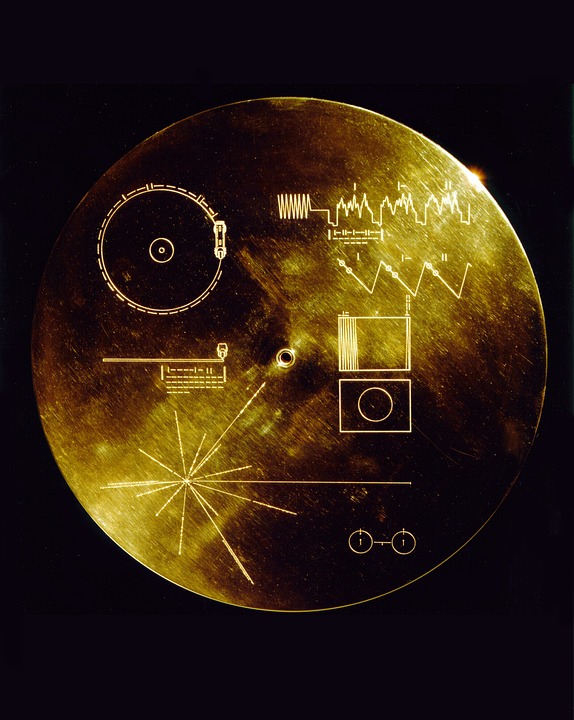The Voyager 2 Encounter: Capturing the First Close-Up Images of Neptune
In the late summer of 1989, Voyager 2, one of NASA’s twin Voyager spacecraft, embarked on a momentous journey that would culminate in the first close-up images of the eighth planet from the Sun – Neptune. A world of mystery had awaited these images for nearly two centuries since its discovery in 1846 by Johann Galle and Heinrich d’Arrest, under the direction of Urbain Le Verrier.
Launched on August 20, 1977, Voyager 2 was part of the Voyager program, a grand interstellar ambition designed to explore the outer planets. After launching less than two weeks apart, Voyager 2 overtook its twin, Voyager 1, and ventured into the unknown, setting records for the furthest spacecraft from Earth.
Before reaching the icy bluish-green globe of Neptune, Voyager 2 paid aidis and nearside encounters with all eight planets in our solar system, cruising past Jupiter in 1979 and Saturn in 1980. Voyager 2 would eventually be launched towards Uranus in 1986 and Neptune in 1989. Voyager 1, in its actual path, was diverted towards interstellar space to explore beyond our solar system.
As Voyager 2 neared Neptune in 1989, the excitement among astronomers and the public was palpable, filling the air with awe and curiosity. Radar systems and onboard sensors measured the planet’s atmosphere, providing invaluable data about the pressure, temperature, and composition of this distant world. The scientific team at NASA’s Jet Propulsion Laboratory eagerly anticipated the flow of information and images.
On August 25, 1989, Voyager 2’s images showed the first detailed views of Neptune and its largest moon, Triton. These photographs painted a remarkable picture: a giant blue planet with colossal, dark spots scattered across its southern hemisphere, now famously known as the Great Dark Spot. The images revealed intricate weather patterns and cloud systems akin to those seen on Earth but magnified millions of times.
The images of Triton added tantalizing insight, revealing what appeared to be a nitrogen ice volcano, icy plains, and immense canyons. The moon’s surface was crisscrossed by a complex network of ridges and troughs, indicating an active geological history that was yet to be unraveled.
Image: An artistic representation of Voyager 2 as it approaches Neptune, capturing the armada of dark and mysterious storm clouds and the Great Dark Spot in 1989.
[Image Description:
An artistic representation of NASA’s Voyager 2 spacecraft, embarking on its historic journey towards the frosty blue planet of Neptune. Above the spacecraft flows a sea of turbulent, dark clouds, dotted with colossal Neptunian storms, among which sits the Great Dark Spot, a vortex of dark swirling winds on the planet’s surface.]
With data pouring in, scientists were soon piecing together an image of Neptune with an environment far more dynamic and active than anticipated. The Great Dark Spot acted as an atmospheric highway, offering new insights into Neptune’s tempestuous climate. Meanwhile, the observations of Triton brought home the message that moons in our solar system could hold exciting secrets, in this case, pointing to a possible subterranean ocean beneath its frosty surface.
The Voyager 2 encounter with Neptune left a deep imprint on our understanding of this distant world, igniting questions and guiding the way for future probes. Neptune’s rings, moons, and the tantalizing suggestion of internal geological activity left astronomers with so many puzzles to solve and ideas to explore.
Frequently Asked Questions
-
When did Voyager 2 fly by Neptune?
On August 25, 1989, Voyager 2 flew past Neptune, providing our first close-up images of the planet. -
What did Voyager 2 discover on Neptune?
The spacecraft discovered a dynamic and active planet, with high-speed winds, dark storm clouds, and the Great Dark Spot, a colossal vortex of dark winds on the planet’s surface. -
What was the Great Dark Spot on Neptune?
The Great Dark Spot was a massive storm system similar to Jupiter’s Great Red Spot. It was an elongated, dark vortex with winds swirling around it at up to 1,500 miles per hour. -
What did the Voyager 2 images of Triton reveal?
Voyager 2’s images of Triton revealed icy plains, a complex network of ridges and troughs, and a possible subsurface ocean. - Why is Triton geologically active?
Although not definitively proven, it’s theorized that tidal forces from Neptune and the radiogenic heat from within could drive the geological activity on Triton.
Voyager 2’s encounter with Neptune significantly expanded our knowledge of the outer edges of our solar system, further urging humanity to continue exploring these distant, enigmatic worlds.
For more information on the Voyager missions and the fascinating encounters with the outer planets, please visit https://voyager.jpl.nasa.gov/.



